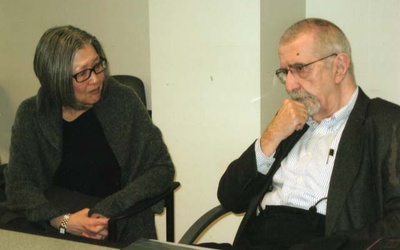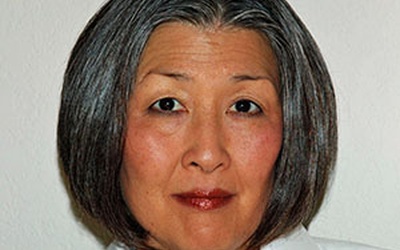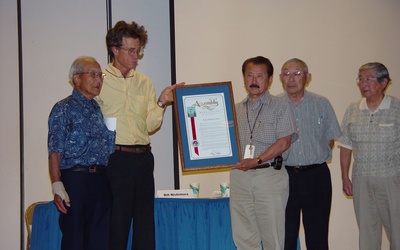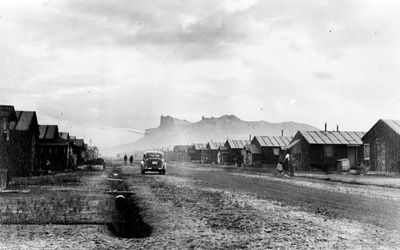
バーバラ・タケイはデトロイト生まれの三世で、60年代後半にグレース・リー・ボッグスとデトロイトアジア政治同盟によってアジア系アメリカ人運動と関わるようになった。何十年もの間、不当な強制収容に対する日系アメリカ人の抗議活動の記録が失われていることに困惑していたが、2000年に初めてトゥーリー湖巡礼をしたとき初めて、第二次世界大戦中の平和的な抗議活動が「親日的な不忠」として悪者にされ、忘れ去られていることに気付いた。過去20年間、彼女は非営利団体トゥーリー湖委員会の役員を務め、トゥーリー湖を日系アメリカ人の公民権運動の地として保存することに尽力してきた。
2023年1月更新
この執筆者によるストーリー
ロジャー・ダニエルズを偲んで
2023年1月29日 • バーバラ・タケイ
私が日系アメリカ人の歴史について初めて読んだ本は、ロジャー・ダニエルズの著書『偏見の政治学』でした。1966 年のことで、大学 1 年生の私の研究の中では、この本は日系アメリカ人の歴史に関する珍しい本でした。この本は、日系アメリカ人と戦時中の強制収容の物語を記録する歴史家としてのロジャーの長く輝かしいキャリアの始まりでした。その後半世紀にわたり、ロジャーの学問は日系アメリカ人の歴史研究の基盤となりました。私たちが初めて顔を合わせたのは、2010 年 2 月、オークランドで国…
Does Terminology Matter?
2013年6月3日 • バーバラ・タケイ
In recent years, the Nikkei community has engaged in a renewed discussion to reject the euphemistic and false terms the government used to minimize the unjust and inhumane nature of the Japanese American incarceration. From 2009 through 2011, the Japanese American National Museum, the Manzanar Committee, the Tule Lake Committee, and UCLA’s George & Sakaye Aratani Chair in Japanese American Incarceration, Redress, and Community organized workshops and community-wide symposiums in Southern and Northern California to stimulate discussion and develop consensus …
Legalizing Detention: Segregated Japanese Americans and the Justice Department’s Renunciation Program - Part 9 of 9
2013年5月10日 • バーバラ・タケイ
Read Part 8 >> The government pursued a hard line, determined to challenge the bid of each renunciant who sought restoration of citizenship. In bleak contrast to Goodman’s decision to restore citizenship en masse, the DOJ began sorting renunciants into 22 categories of offenses it characterized as serious enough to deny restoration of citizenship.1 Collins wound up spending many years battling the negative administrative classifications the DOJ assigned to his thousands of individual clients. Collins faced opposition not only from the …
Legalizing Detention: Segregated Japanese Americans and the Justice Department’s Renunciation Program - Part 8 of 9
2013年5月3日 • バーバラ・タケイ
Read Part 7 >> Creating Alien Enemies Edward Ennis’ Deputy in the DOJ Alien Enemy Control Unit, John Burling, was the designated hearing officer for the renunciation hearings at Tule Lake. Burling said that the renunciation hearings would be a careful, deliberate process, making it difficult to renounce. Instead, the DOJ set up what amounted to a deportation mill, stripping Americans of their citizenship and providing the government with a legal fig-leaf that justified the individual detentions. Burling even recommended “accepting these …
Legalizing Detention: Segregated Japanese Americans and the Justice Department’s Renunciation Program - Part 7 of 9
2013年4月26日 • バーバラ・タケイ
Read Part 6 >> Why Did They Renounce? After its publication in 1946, The Spoilage remained for many decades the primary source on Tule Lake. This seminal work cited allegations of harassment by pro-Japan groups that led to the mass renunciations, using field notes written after the war ended, September 25, 1945 and December 19, 1945.1 Renunciants who sought to regain their U.S. citizenship from the Department of Justice recognized that the desired explanation for their renunciation was to blame the pro-Japan …
Legalizing Detention: Segregated Japanese Americans and the Justice Department’s Renunciation Program - Part 6 of 9
2013年4月19日 • バーバラ・タケイ
Read Part 5 >> Stampede to Renounce Public Law 405, authored by U.S. Attorney General Francis Biddle, permitted American citizens to renounce their citizenship during time of war. Congress passed it and President Roosevelt signed it into law on July 1, 1944. This denationalization law was directed at the Japanese Americans in Tule Lake after widespread newspaper coverage of the November 1943 disturbances at Tule Lake led to “intensification of the idea that some law should be passed depriving these people of …
Legalizing Detention: Segregated Japanese Americans and the Justice Department’s Renunciation Program - Part 5 of 9
2013年4月12日 • バーバラ・タケイ
Read Part 4 >> Western Defense Command Preparation for Individual Detention On December 17, 1944, Major General H. C. Pratt, Commander, WDC, rescinded the Mass Exclusion Order that ordered all Japanese Americans removed from the West Coast. Effective January 2, 1945, individual disloyalty, instead of race, would be used as the test for exclusion from the Pacific States. It also provided that “any person of Japanese ancestry about whom there is available information indicating disloyalty will continue to be excluded on an …
Legalizing Detention: Segregated Japanese Americans and the Justice Department’s Renunciation Program - Part 4 of 9
2013年4月5日 • バーバラ・タケイ
Read Part 3 >>End of Army OccupationThe WRA and the Army had very different organizational dynamics, and their relationship was often tense and fraught with disagreement. Conflict over management of the stockade climaxed on May 23, 1944, when the WRA’s Board of Inquiry approved the release of two inmates, while the Army disapproved their release. After a conference between WRA and Army officials on May 24, 1944, Director Best, by letter to Lt. Col. Verne Austin, Commander, 752nd Military Police …
Legalizing Detention: Segregated Japanese Americans and the Justice Department’s Renunciation Program - Part 3 of 9
2013年3月29日 • バーバラ・タケイ
Read Part 2 >> The Stockade: Symbol of the Worthlessness of U.S. CitizenshipWith the Center’s elected leaders imprisoned in the stockade, the stockade became the omnipresent reminder of the keepers’ arbitrary use of power at Tule Lake. It was an evocative reminder of the unjust post-Pearl Harbor roundups of Japanese American community leaders who were singled out and imprisoned, punished for their prominence and leadership. In a 15-page letter written September 19, 1944 to U.S. Attorney General Francis Biddle,1 a group …
Legalizing Detention: Segregated Japanese Americans and the Justice Department’s Renunciation Program - Part 2 of 9
2013年3月22日 • バーバラ・タケイ
Read Part 1 >> Martial Law With most of the elected Nikkei leadership imprisoned in the stockade, Commander Austin made plans for a mass public meeting on November 13, 1943 to be attended by the Army and WRA and the Negotiating Committee. This mass meeting never materialized as the prisoner population did not show up. Only the Army and WRA were present; they conducted their program without an audience. Commander Austin made proclamations to govern operation of the center, which, in effect, …












